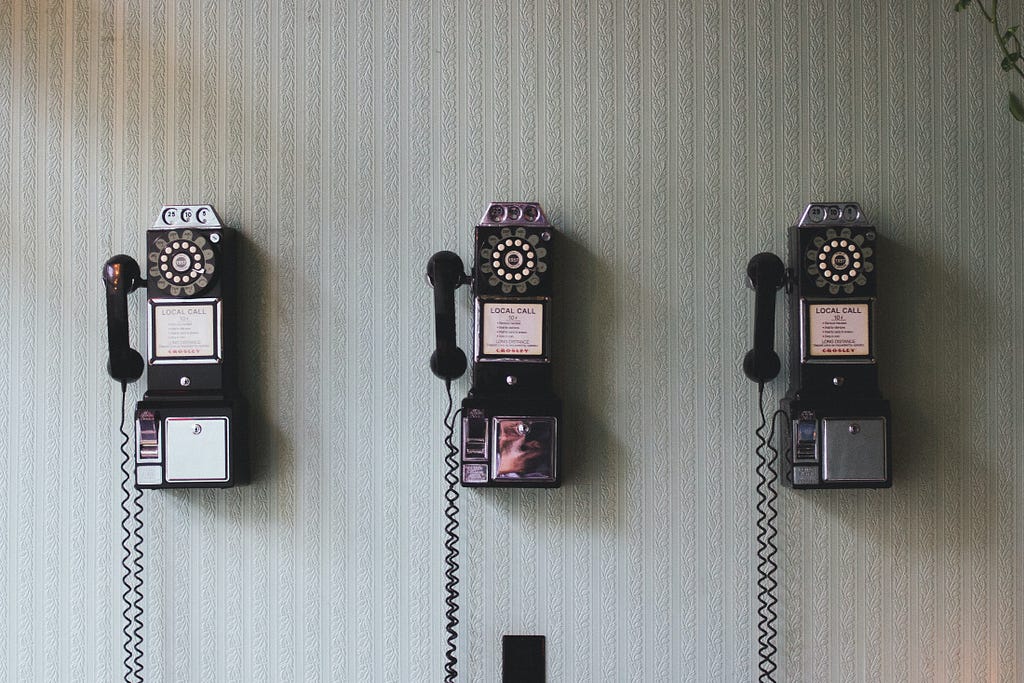Creating the best Alexa Skill Content: The secrets for an improved voice experience! Learn from +13K bad reviews

Launching a successful Alexa skill is dependent on an infinite number of variables-from content quality to content delivery network. The no. 1 component for which a user enables a voice app from his Amazon Echo device is the Alexa Skill Content.
For a Skill to become successful, apart from technical and code-related factors, the content it delivers has a great impact. Especially in the Alexa Skill Marketplace.
You need to pay close attention to the skills that your customers are using over and over again. We have found that the most popular Skills are those created by developers who have focused on meeting a specific customer need and providing useful Alexa Skills. Therefore, they are used by customers regularly, or at least frequently.

Key Findings
While focusing on understanding what works best for an Alexa Skill, we decided to focus our take on another perspective. Towards a better understanding of what makes a Skill scoring low on reviews.
We made this our focus considering that many brands, rushing to have their Alexa Skill published, left the skills with gaps in content quality and structure. We took under study more than 13K bad Alexa Skill reviews
This without considering simplicity and connectivity issues.
From our analysis, we were able to unveil 3 key findings when talking about Skill content:
- The 4 main problems with Alexa Skill Content we analyzed.
- The top 5 Alexa Skill categories reported containing bad content.
- What users consider an inconvenient, inaccurate, and repetitive skill when it comes to content?

However, let’s take a deeper look so we can understand each category in detail.
4 main problems when it comes to Alexa skill content

Inaccurate and limited Alexa skill content are the main issues we encountered.
From a total of 22.36% of reviews complaints related to content issues, the ones complaining about inaccurate and limited data occupy the most of it, at 9.79%.
In categories like Food and Drink, Weather, Travel & Transportation are the ones where these problems are found the most.
Trending Bot Articles:
3. Concierge Bot: Handle Multiple Chatbots from One Chat Screen
The impact of inaccurate & limited Information on your Alexa Skill
Mostly related to saving user data, retrieving necessary or requested information. These, along with inaccurate information or coordinates, limited voice app scope, functionalities, and information.
While most Alexa Skill publishers cannot fix all issues immediately, it is important to work continuously in order to solve them one by one.
If issues like inaccurate & limited content keep impacting an Alexa Skill for an extended period of time, it will cause severe problems in the future.
The average user might have one bad experience with a Skill, but it is unlikely this will prevent them from engaging with your skill again. However, if you fail to deliver a seamless and natural experience for your users, they may not engage with your skill again.
% of each category with inaccurate & limited information

As we have seen above, there are several categories of skills having a lot of negative reviews related to inaccurate & limited information and content.
The category with the highest number of negative reviews related to inaccurate Alexa Skill content is Food & Drink at 31,36%. Next comes Business & Finance at 13,33% and Health & Fitness at 11,02%.
Another factor to consider is the fact that for these three categories issues related to inaccurate content are the ones causing the most damage.
The majority of inaccuracy-related negative reviews impact mainly Skills about Food, Cooking, Health, and Fitness.
These types of Skills have issues with saving certain pieces of information or retrieving them when the user requests it. It can be for cooking recipes, health advice, dietary or training exercises, and programs.
However, we cannot leave apart Business & Finance. For this category, from a total of 33,33% negative reviews related to the content, nearly half of them (13,33%) belong to inaccurate information. Considering the kind of category, providing inaccurate information can make a user not use the Skill anymore right from the start.
As for the reviews related to limited information and functionality, the two most impacted ones are Weather at 59,14% and Travel & Transportation at 50,73%.
Considering the high percentage of content issues related to this exact topic, it is not one to be ignored.
How to solve these content issues?

To create a good voice experience, your skill must be tested across the entire experience — including the opening dialog, asking for commands, and offering response options.
Because of all the technological developments and intricate functions available in voice tech, delivering a voice experience that is natural and engaging for the user is no simple task. Alexa’s capabilities are available across a wide range of devices, so it’s important to test your skill across the entire experience.
But, this is only the first step at providing a pleasant Alexa Skill performance.
The use of Alexa Skill Analytics can completely change Skill ratings over time, benefiting both the user and the brand. From the Alexa Skill examples we examined, the ones providing accurate information are bound to reach higher Skill ratings. This translates to more users and larger brand awareness.
The same goes for the ones with limited content. Expanding the information you provide with several subcategories can be the key to success. Especially for the ones mentioned above.
Surely, expanding the information you provide will be technically harder, but it will also expand the user base you can reach.
Top 5 categories with bad Alexa Skill content

This report shows the top five categories with the highest total of negative content-related reviews.
This list includes Skills that offer daily needed content and entertainment like Music & audio, Weather, and News. But, it also includes Skills that maybe we might not use daily like Travel & Transportation, and Skills that offer Local content.
Bad content % for each category
Considering that these 5 categories include Skills that we use most, it is important to understand the impact that bad contact has on them.
- Music & Audio: 69,23% where 62,86% is related with inconvenient content.
- Weather: 67,74% where 59,14% is related with limited content issues.
- News: 66,96% where 59,42% is repetitive & out of date content.
- Local: 72,58% where 66,13% has to do with various issues of their content.
- Travel & Transportation: 54,36% where 50,73% is for limited content.
However, here are two things to consider:
- For each category, there is a dominant issue that causes their high number of negative reviews.
- Having content issues on a single subject makes it simple to improve your Skill ratings in the Alexa Skills marketplace
Why do Local Alexa Skills have 72,58% of reviews for bad content?

As mentioned, Local Skills have more than 70% of their reviews related to bad content. More specifically, 66,13% of these negative reviews complain about problems with lack of variety, options, and connectivity. To better understand what reviews complain about you can simply check Alexa Skills examples about local Skills in the Alexa Skill Store.
Local Skills will often be about Event Finders, Food Delivery & Takeout, Movie Showtimes, Public Transportation, Restaurant Booking, Info & Reviews, Schools, etc.
It is true that Skills for Event Finders, Movie Showtimes, and Public Transportation we might not use so often, but the ones about Food Delivery & Takeout, Restaurant Booking, Info & Reviews are used way more often.
Being so, a brand or company cannot afford to have their users not use their Alexa Skill because of minor issues.
These minor issues can heavily impact the user’s experience in the long term, and cause him to not use the Skill anymore.
With this said, improving an Alexa Skill Performance based on users’ feedback can be a good starting point. It will help to solve initially the most impactful problems and improve the user experience.
Once this is set on regular support, you can start expanding the options available for the user and adding variety to the Skill experience.
How to find a solution for each case?

As we noticed before, there is an important thing to consider when trying to improve our Alexa Skill performance. Is the fact that most bad Alexa Skill content reviews are related to a single issue.
This means that the work can be primarily focused on that exact issue.
For example:
In both of these cases, a periodical check of Alexa Skill Metrics can help in preventing or improving faulty content and features.
What is considered an inconvenient, inaccurate, and repetitive Skill when it comes to Alexa Skill content?
When it comes to Alexa Skill content, having an issue, however minor it seems, if left unchecked can cause a loss in users numbers.
Issues like repetitive or inaccurate content can affect the user’s experience heavily, and even cause them not to use a Skill again.
Considering this, let’s see in detail what we can learn from the collected and analyzed data.
Analysis on data

From the collected data we say for sure that the provided content has a great impact on most Alexa Skill categories and a fairly important one on the rest.
From more than 13k Alexa Skills taken understudy, distributed on 21 different categories, only for a few of them the content quality makes a little difference. Here we can include Skills meant for Smart Home control, Connected Cars, or Games & Trivia.
For the rest of the categories, content quality importance varies from a minor impact on user experience to a crucial factor on Alexa Skill quality and usability.
However, a minor impact left uncontrolled for a long time can have the same impact as a significant one.
Inconvenient Alexa Skill Content
Before we mentioned that when referring to inconvenient Skill content, it is related to the creation and management of customizable features along with needlessly complicated, incomplete, or inconvenient processes and voice commands.
We also mentioned that simplicity is the key.
This indicates the necessity of using simplified in-skill processes, steps, and customization. This can improve the user experience and increase usability. No user wants to go through a lot of unrequested content and questions to obtain the needed one.
Inaccurate Skill Content
This is an issue mainly related to Skills having a problem with saving or retrieving relevant information, or with inaccurate coordinates & temperature information.
For example Skills about Food & Drinks at 31,36%, Business & Finance at 13,33%, Health & Fitness at 11,02%, and Productivity related ones at 7,55%.
No one would like to receive inaccurate information when it is about business & finance topics, incorrect recipe measurements, or maybe incorrect information about diets and exercises.
Making a fine-tuning on the data the Skill provides and giving the possibility to correctly save and retrieve user data can have a positive impact on solving these issues.
Repetitive & Out of Date Content
For these types of Skills, the problems are that content is often old, repetitive, outdated, too long, or frustrating.
These issues mainly impact Alexa Skill about Movies & TV at 33,77% from the total of negative reviews and News Skills at 59,42%. They also affect Skills about Novelty & Humor at 15,83% and Sports at 18,18%.
Now imagine a user having a Skill that is stuck at the same news or humor content for an extended time. This situation would definitively force him to try another Skill with the risk of never returning to the previous one.
This is why imputing fresh content is a necessity, with the intention of creating a plausible experience for the audience.
Alexa Skill building & maintenance strategy

From all these Alexa Skills examples we saw, now it gets easier to understand what many of the negatively reviewed Skills are lacking in content. It makes it clear that, for you to improve your Alexa Skill performance & Skill ratings, you need to keep continuous attention to what is going on with the Skill.
Not only checking your Skill reviews but also by checking your Alexa Skill analytics & metrics.
Alexa Skill Analytics allows you to have a wide view of the Skill performance, discover the user needs and prevent any harmful impact that might come from malfunctioning Skill features and content errors like the ones we mentioned. For a more detailed understanding you can read about +13k Bad Alexa Skills Analysis.
And it’s exactly what Ipervox makes available through our platform. Not only the possibility to successfully create and publish an Alexa Skill. it gives you the tools to maintain and analyze the growth of your Skill along with continuous support and advice. Also, offering our experience in voice design and voice marketing as a way of empowering your brand awareness.
Don’t forget to give us your 👏 !




Creating the best Alexa Skill Content: The secrets for an improved voice experience! was originally published in Chatbots Life on Medium, where people are continuing the conversation by highlighting and responding to this story.















